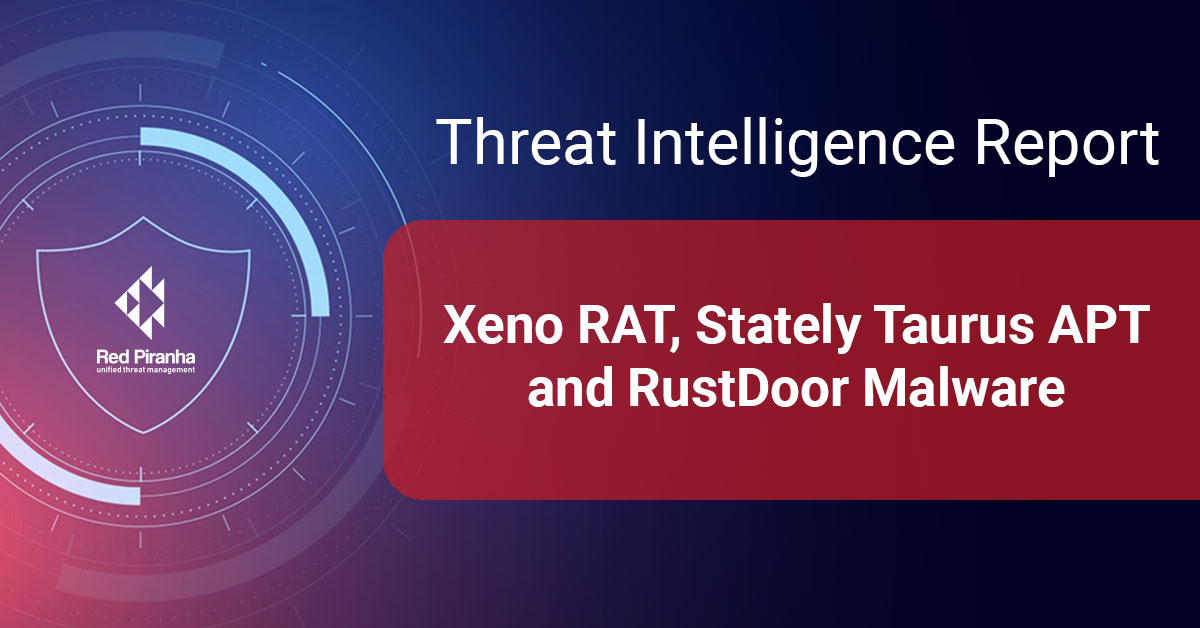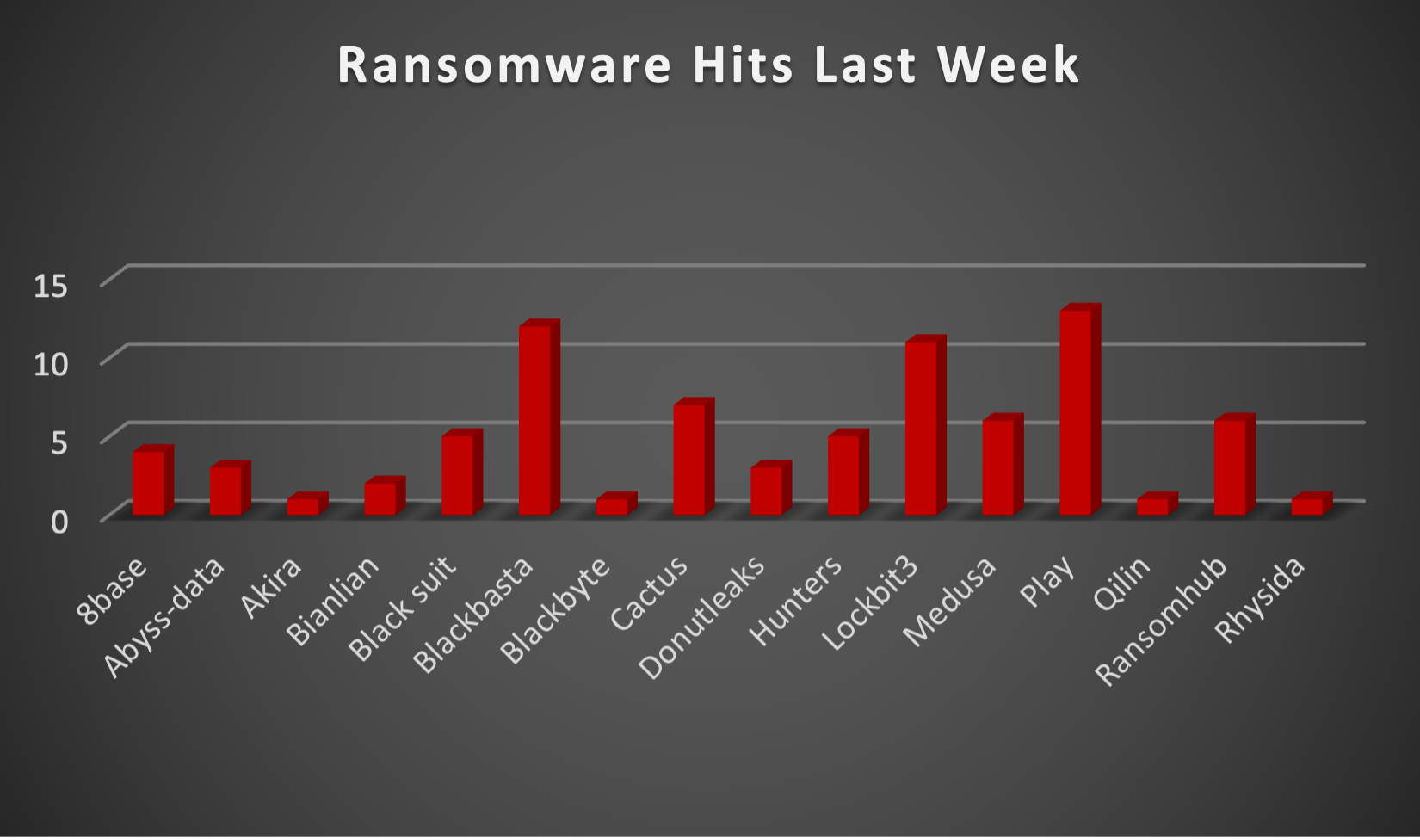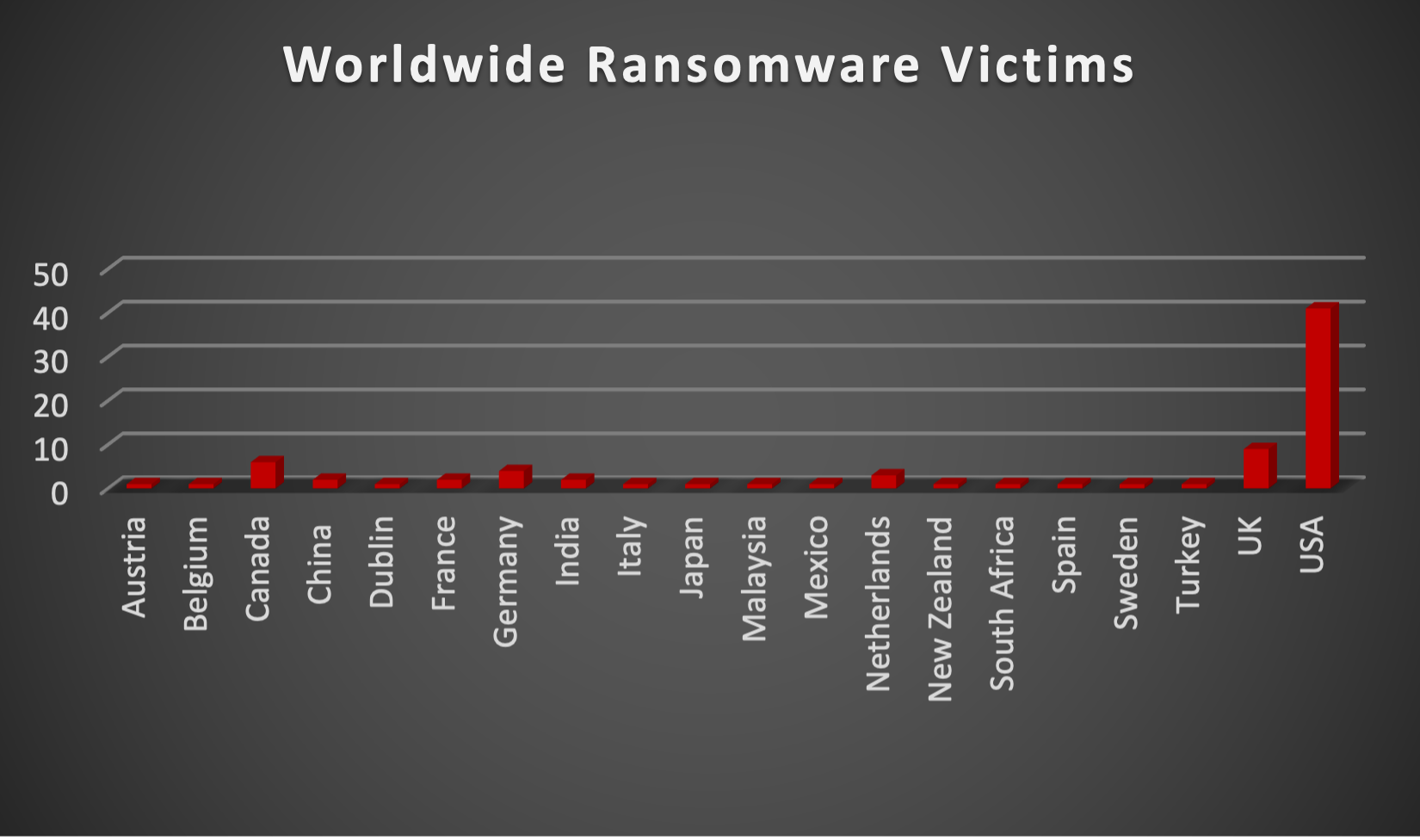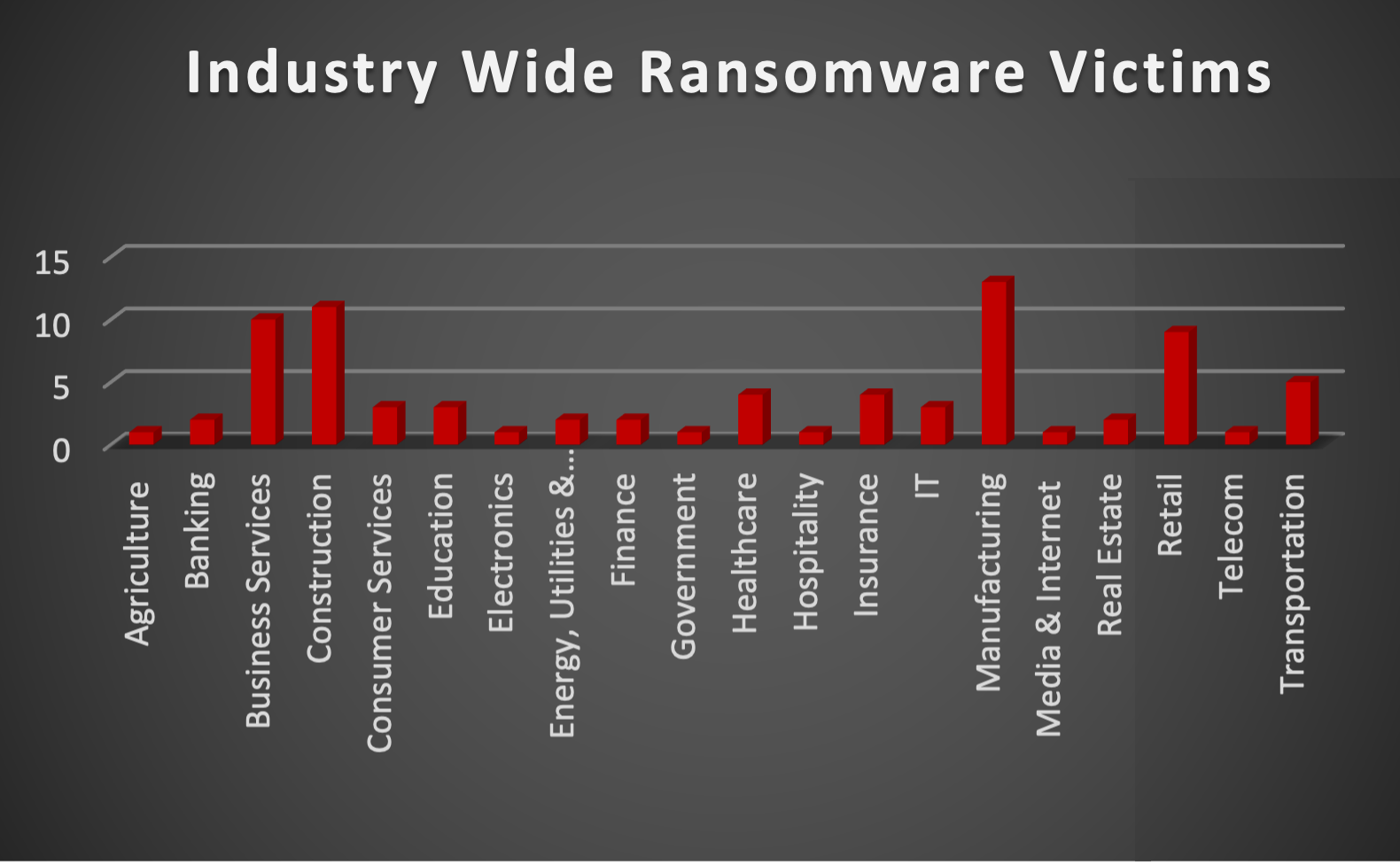
| New Threat Detection Added | 3 (Xeno RAT, Stately Taurus APT and RustDoor Malware) |
| New Threat Protections | 125 |
| New Ransomware Victims Last Week | 81 |
Weekly Detected Threats
The following threats were added to Crystal Eye XDR this week:
|
Threat name:
|
Xeno RAT | |||||||||||||||||||||
|
In today's fast-evolving cyber world, understanding and tackling complex malware like Xeno RAT is crucial. Xeno RAT, coded in C#, is a powerful malware with advanced features. Xeno RAT, available on GitHub, was customised and spread via Discord CDN, disguised as a WhatsApp screenshot. It employs various techniques like process injection, DLL manipulation, and obfuscation to infiltrate systems, monitor activities, and communicate with its Command-and-Control server covertly.
|
||||||||||||||||||||||
|
Threat Protected:
|
02 | |||||||||||||||||||||
|
Rule Set Type:
|
|
|||||||||||||||||||||
|
Class Type:
|
Trojan-activity | |||||||||||||||||||||
|
Kill Chain:
|
|
|||||||||||||||||||||
|
Threat name:
|
Stately Taurus APT | |||||||||||||||||||||
|
The State Actor Taurus threat group, linked to Chinese interests, is using various versions of the PUBLOAD malware. Some versions employ Cobalt Strike instead of PlugX and include infostealers. Despite variations, evidence suggests these campaigns are connected. A key clue is the use of specific titles, like one mentioning rebel attacks in Myanmar. Additionally, shared infrastructure indicators such as certificate Common Names, IP addresses, and code similarities tie these campaigns together. This indicates a coordinated effort by the threat group, potentially serving China's geopolitical goals.
|
||||||||||||||||||||||
|
Threat Protected:
|
01 | |||||||||||||||||||||
|
Rule Set Type:
|
|
|||||||||||||||||||||
|
Class Type:
|
Trojan-activity | |||||||||||||||||||||
|
Kill Chain:
|
|
|||||||||||||||||||||
|
Threat name:
|
RustDoor Malware | ||||||||||||||||||
|
RustDoor is a malicious program for Macs, coded in Rust. It acts as a backdoor, sneaking into devices to create access for further infections. Currently, three versions of RustDoor are known, suggesting ongoing development. Though there's weak evidence linking it to certain ransomware groups, shared infrastructure doesn't necessarily imply collaboration. Once inside a device, RustDoor connects to a Command-and-Control server, allowing attackers to issue commands, manipulate files, and even display fake dialogs to trick users. It targets various file types, collecting and sending them to cybercriminals. RustDoor can also download additional malware and steal sensitive data. Future versions may have different or enhanced capabilities.
|
|||||||||||||||||||
|
Threat Protected:
|
02 | ||||||||||||||||||
|
Rule Set Type:
|
|
||||||||||||||||||
|
Class Type:
|
Attempted-admin | ||||||||||||||||||
|
Kill Chain:
|
|
||||||||||||||||||
Known exploited vulnerabilities (Week 3 - March 2024)
|
Threat
|
CVSS
|
Description | |
|
N/A
|
N/A
|
No known exploited vulnerabilities
|
Updated Malware Signatures (Week 3 - March 2024)
|
Threat
|
Description
|
|
|
Glupteba
|
A malware dropper that is designed to download additional malware on an infected machine.
|
|
|
CoinMiner
|
This malicious software installs and runs cryptocurrency mining applications.
|
|
|
Kuluoz
|
A backdoor for a botnet. It executes commands from a remote malicious user.
|
|
|
Ramnit
|
A banking trojan used to steal online banking credentials.
|
|
|
Remcos
|
Remcos functions as a remote access trojan (RAT), granting unauthorised individuals the ability to issue commands on the compromised host, record keystrokes, engage with the host's webcam, and take snapshots. Typically, this malicious software is distributed through Microsoft Office documents containing macros, which are often attached to malicious emails.
|
| New Ransomware Victims Last Week: | 81 |
|
The Red Piranha Team actively collects information on organisations globally affected by ransomware attacks from various sources, including the Dark Web. In the past week alone, our team uncovered a total of 81 new ransomware victims or updates on previous victims across 21 different industries spanning 20 countries. This underscores the widespread and indiscriminate impact of ransomware attacks, emphasising their potential to affect organisations of varying sizes and sectors worldwide. Play ransomware group stands out as the most prolific, having updated a significant percentage of victims noted (16.05%) distributed across multiple countries. The Play ransomware group has emerged as a significant threat, having executed over 300 successful attacks since June 2022, according to cybersecurity authorities in the United States and Australia. This group, known for its devastating tactics, has targeted major American cities such as Oakland and Lowell, Massachusetts, along with Dallas County, causing extensive disruptions and data breaches that took days to rectify. Additionally, they've struck Switzerland, prompting government alerts due to data theft from an IT provider. Operating discreetly, Play ransomware perpetrators prefer direct email contact for negotiations, omitting ransom demands from their initial communications. Their "double-extortion" approach involves encrypting systems after stealing data, utilising stolen credentials and exploiting vulnerabilities in popular software like FortiOS and Microsoft tools. To add pressure, they threaten to publish exfiltrated data on the Tor network if victims refuse ransom payments, typically made in cryptocurrency. The Play group's tactics include adding a ".play" extension to filenames and using a variety of tools to disable anti-virus software and exfiltrate data to their control. Initially targeting Latin American government entities, Play has expanded its reach globally, garnering attention for high-profile attacks on cities like Oakland and organisations like Stanley Steemer and central Virginia's transit system. These attacks have resulted in the exposure of sensitive data, including government records and personal information of citizens and officials, totalling hundreds of gigabytes released on their leak site. In comparison, Blackbasta and Lockbit3 ransomware groups updated 12 and 11 victims, respectively, in the past week. The following list provides the victim counts in percentages for these ransomware groups and a selection of others. |
|
| Name of Ransomware Group | Percentage of new Victims last week |
|
8base
|
4.94%
|
|
Abyss-data
|
3.70%
|
|
Akira
|
1.23%
|
|
Bianlian
|
2.47%
|
|
Black suit
|
6.17%
|
|
Blackbasta
|
14.81%
|
|
Blackbyte
|
1.23%
|
|
Cactus
|
8.64%
|
|
Donutleaks
|
3.70%
|
|
Hunters
|
6.17%
|
|
Lockbit3
|
13.58%
|
|
Medusa
|
7.41%
|
|
Play
|
16.05%
|
|
Qilin
|
1.23%
|
|
Ransomhub
|
7.41%
|
|
Rhysida
|
1.23%
|

|
In a comprehensive analysis of ransomware victims across 20 countries, the United States emerges as the most heavily impacted nation, reporting a staggering 41 victim updates in the past week. The following list provides a breakdown of the number and percentage of new ransomware victims per country, underscoring the persistent and concerning prevalence of ransomware attacks, with the USA particularly susceptible to these cybersecurity threats.
|
|||||||||||||||||||||||||||||||||||||||||||

|
Upon further investigation, it has been identified that ransomware has left its mark on 20 different industries worldwide. Notably, the Manufacturing and Construction bore the brunt of the attacks in the past week, accounting for 13 and 11 victims, respectively. The table below delineates the most recent ransomware victims, organised by industry, shedding light on the sectors grappling with the significant impact of these cyber threats.
|
|||||||||||||||||||||||||||||||||||||||||||

